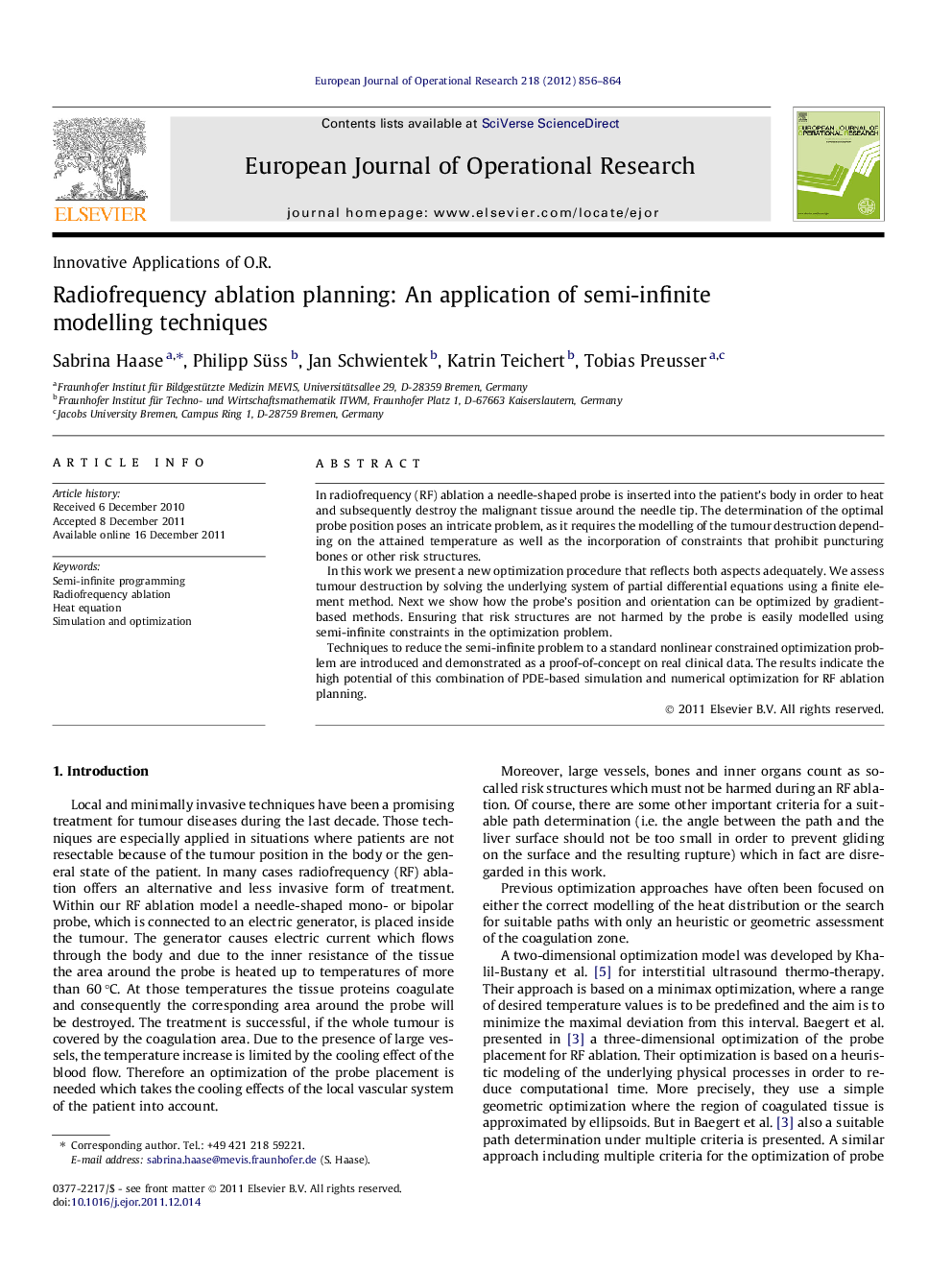| Article ID | Journal | Published Year | Pages | File Type |
|---|---|---|---|---|
| 478413 | European Journal of Operational Research | 2012 | 9 Pages |
In radiofrequency (RF) ablation a needle-shaped probe is inserted into the patient’s body in order to heat and subsequently destroy the malignant tissue around the needle tip. The determination of the optimal probe position poses an intricate problem, as it requires the modelling of the tumour destruction depending on the attained temperature as well as the incorporation of constraints that prohibit puncturing bones or other risk structures.In this work we present a new optimization procedure that reflects both aspects adequately. We assess tumour destruction by solving the underlying system of partial differential equations using a finite element method. Next we show how the probe’s position and orientation can be optimized by gradient-based methods. Ensuring that risk structures are not harmed by the probe is easily modelled using semi-infinite constraints in the optimization problem.Techniques to reduce the semi-infinite problem to a standard nonlinear constrained optimization problem are introduced and demonstrated as a proof-of-concept on real clinical data. The results indicate the high potential of this combination of PDE-based simulation and numerical optimization for RF ablation planning.
► Presenting a new application of semi-infinite modelling techniques. ► Combination of a PDE based simulation of a medical process and a numerical optimization including important constraints. ► Extension of existing optimization methods of radiofrequency ablation (RFA).
